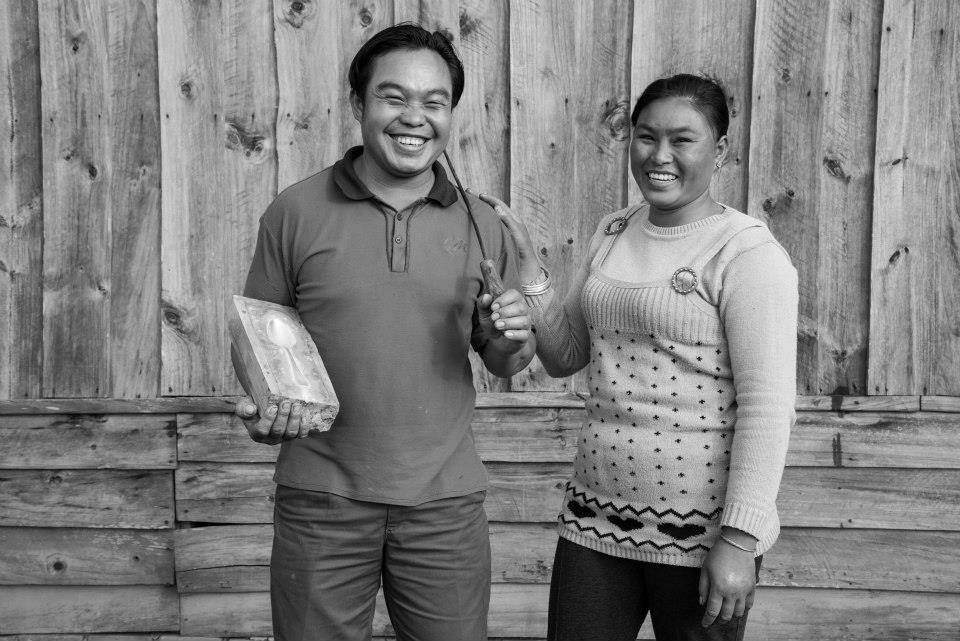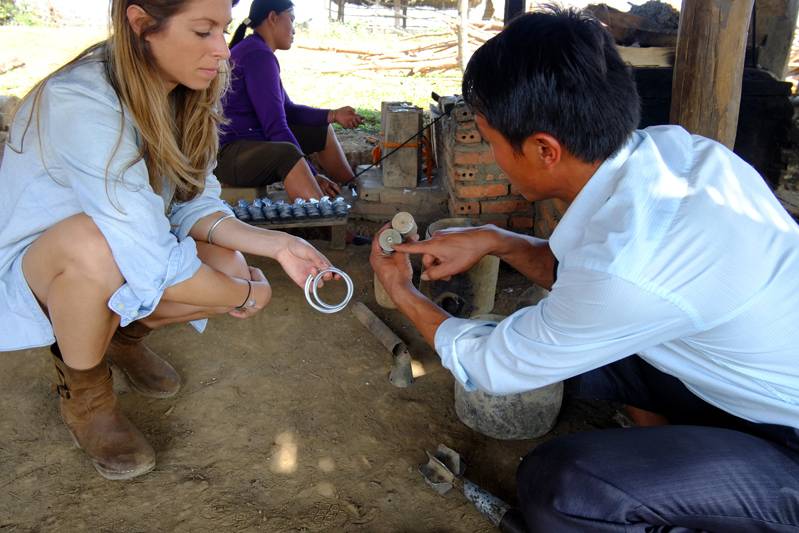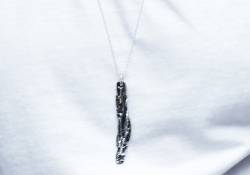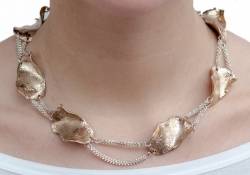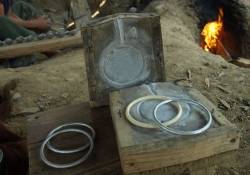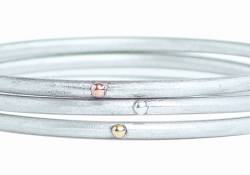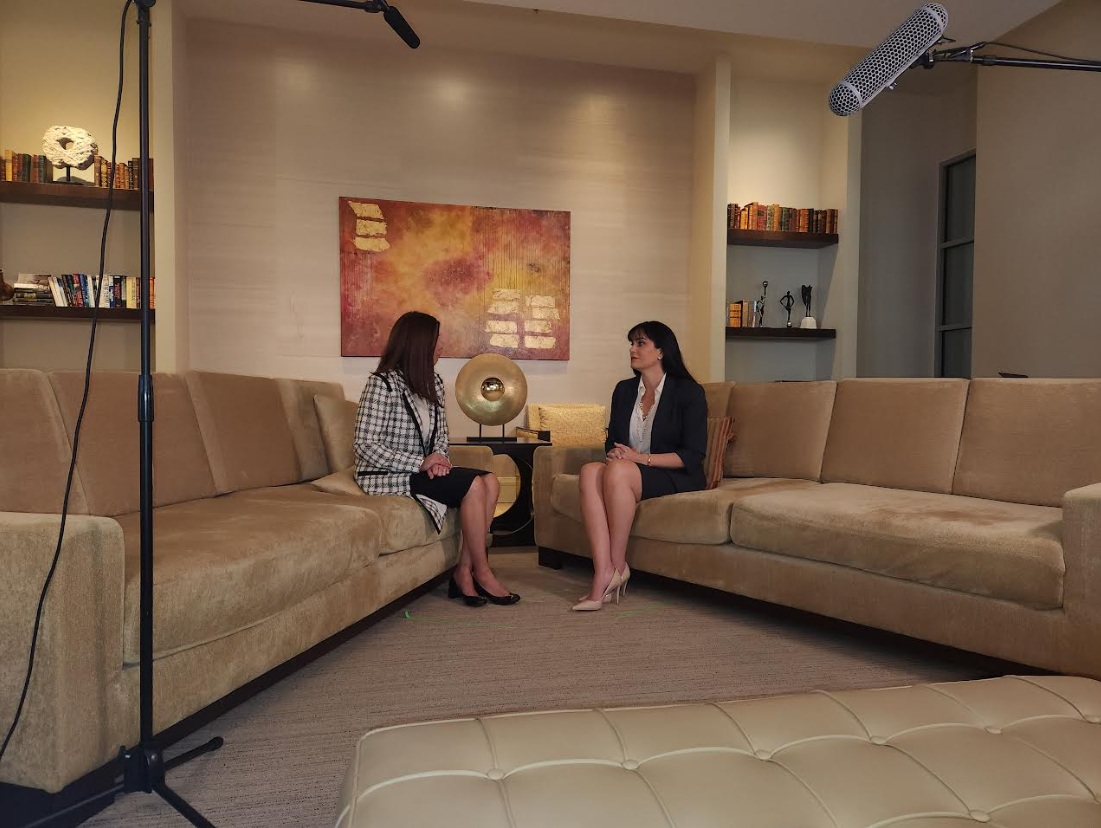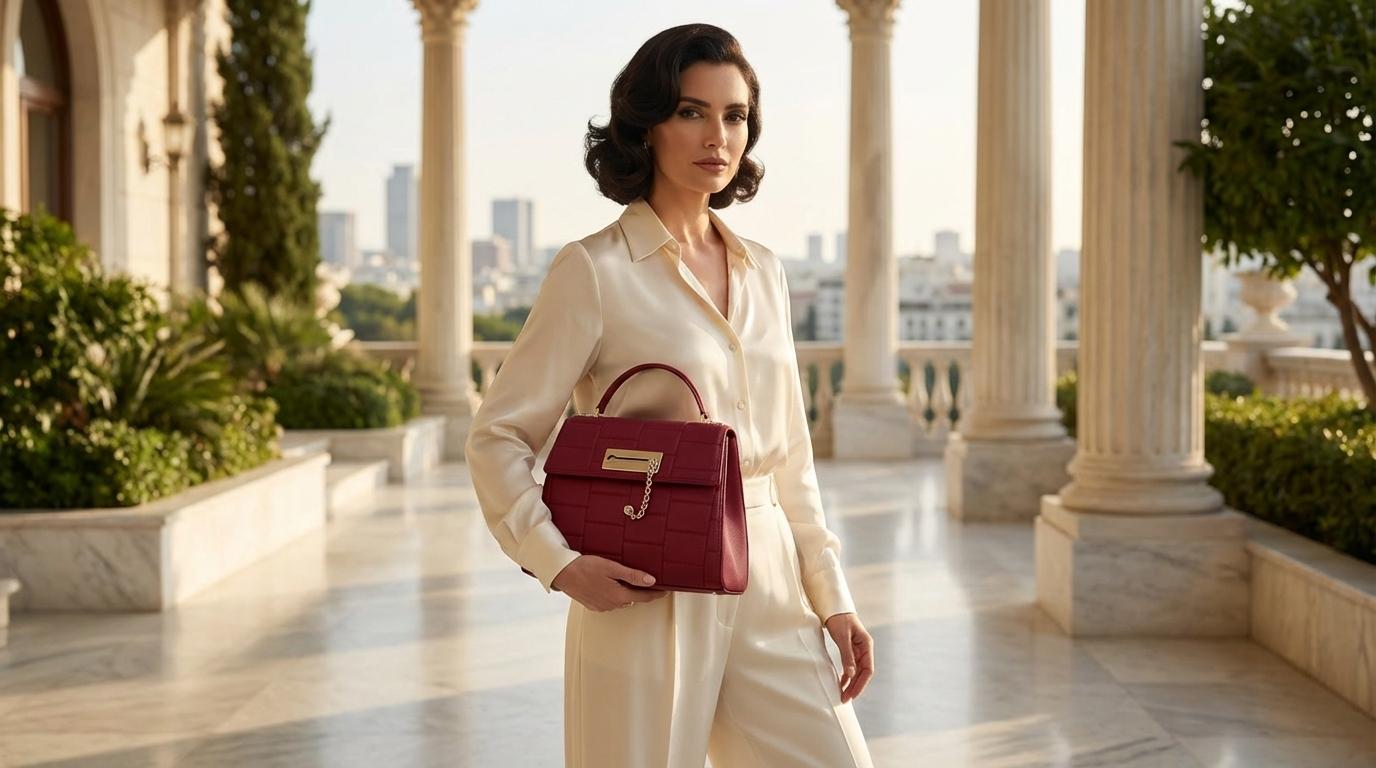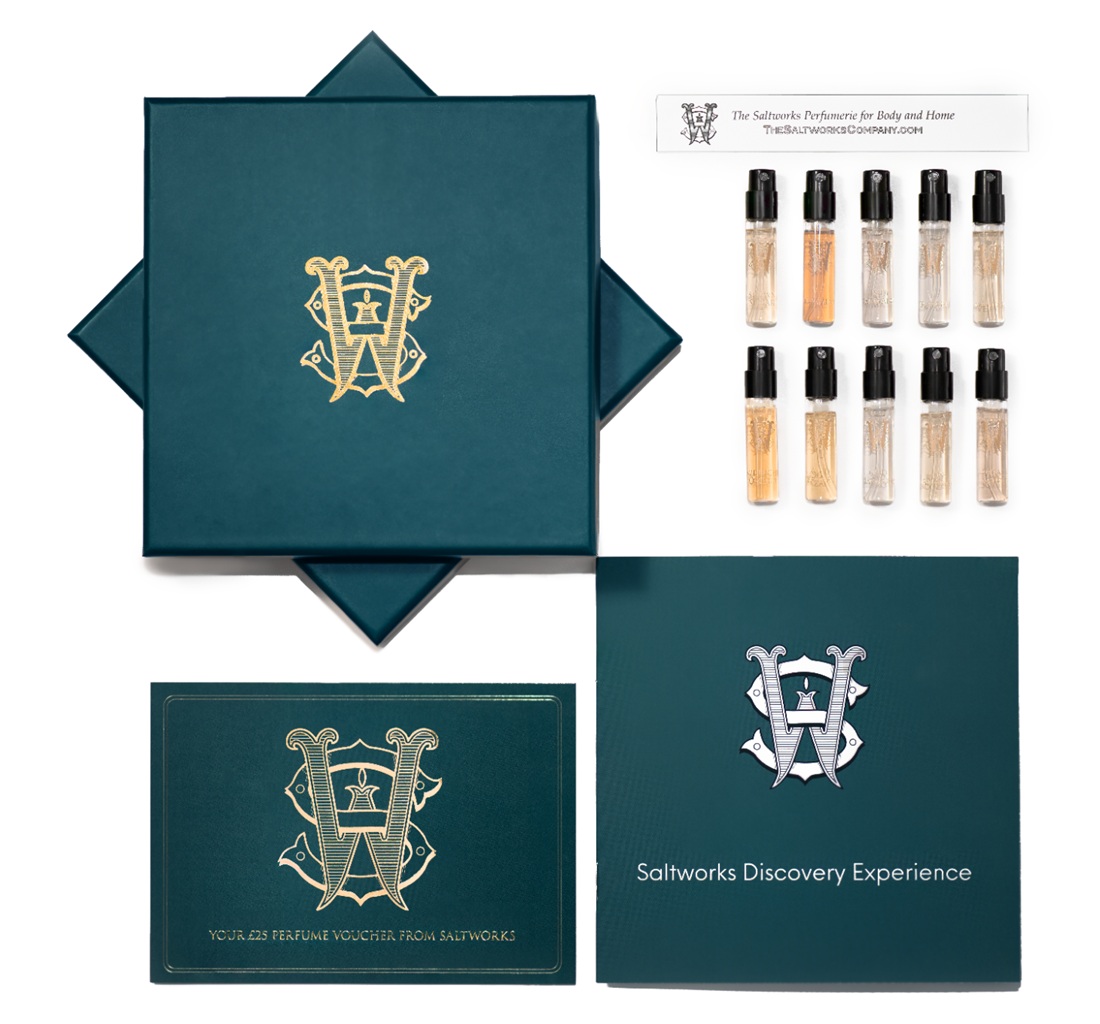Elizabeth Suda Collaborates with Laotian Artisans to Create Jewelry from Detonated Bombs

All jewelry has a story. Sometimes it comes from the place a piece was created. Other instances, it originates from the person who purchased the bauble. And occasionally, it arises from a time of historical significance—an era riddled with such violence and despair, that it’s hard to fathom how something so beautiful could result from something so tragic. No one understands this sentiment better than jewelry designer Elizabeth Suda. Since 2010, the 31-year-old New Yorker has been working with artisans in Laos to craft fine jewelry from the scraps of detonated American-made bombs leftover from the Vietnam War.
“Laos is considered the most heavily bombed country, per head, in history. Even more than World War II, combining Europe and Japan,” she tells Haute Living from the patio of a French café in her neighborhood of Williamsburg, Brooklyn. “It is mind-boggling that a country the size of the United Kingdom, and with a population smaller than New York, could have that many bombs.”
After traveling to the Southeast Asian country in 2008 to research sustainable textiles for Coach, her former employer, Suda stumbled upon a village of families that were melting bomb shards into spoons—a trade passed down from generation to generation. “When most people think of bombs, they think of really heavy material. But the spoons are actually really light,” she explains. “Then it hit me—we need to do jewelry.”
Though Suda immediately saw the appeal of creating, in essence, wearable history, it took some time for her to convince the artisans of her vision. “They couldn’t make jewelry—and they kind of didn’t want to,” she admits. “They thought, who is actually going to buy it?” Eventually, the artisans came onboard, and Suda’s company, Article 22, was born. “The first thing we did was create a bracelet,” she says, holding up a simple aluminum bangle engraved with the phrase “dropped and made in Laos.”
Crafted from the fins of rocket artillery or the cases of cluster bombs, the bangles served as a means to not only create something beautiful from tools of mass destruction, but also create a dialogue about the country’s violent history. “The story and the history of it is really heavy, but when you put it in terms of how the artisans came to transform something negative into something positive, it really changes the whole story,” she muses. “Tons of tourists buy the bracelets and they become voices around the world.”
Voices that still desperately need to be heard today. Between 1964 and 1973, more than 260 million cluster bombs rained down on Laos, 80 million of which failed to explode and still litter the ground. Today, the bomb remains continue to kill and injure thousands of individuals, particularly in the 6,130 square-mile Xiangkhouang Province. In an effort to help, Article 22 donates 10 percent of the jewelry-making costs towards bomb clearance. “One of the lower-end bangles clears three square meters of bomb-littered land,” she discloses. “The more expensive ones with rose gold clear 10 to 12 square meters. So we give back more as the price rises.”

Additionally, Suda pays the Laotian artisans at least four times the local market rate they earn by selling spoons. “That’s the starting point because what we ask them to do is more complicated. Now, they actually get the equivalent of the Laos government salary average, so it is a big improvement,” she reveals. “They don’t really have disposable income. But creating the jewelry brings that disposable income that they might need to pay for phone cards, electricity or health care… all of those things that being a farmer is not going to yield.”
Today, Article 22 has expanded into a full-range accessories brand comprised of luxury bracelets, necklaces, rings, and earrings that are sold at more than 100 boutiques throughout the world, including The New Museum of Contemporary Art and Curve in New York City. The company currently offers two lines: Article 22.1, story-driven jewelry with lower price points, and Article 22.2, abstract pieces that mix in other precious materials such as sterling silver, rose gold, and black rhodium. “The first collection is all about working within the limits of whatever can be done in the village. Everything is totally handmade—it’s so of the earth,” she says animatedly, proudly whipping out a picture of the homemade kiln where a Laotian woman sits, smiling, melting discarded bomb material. “The second collection is really about saying, OK, we’re going to take what the artisans can do in the village and extrapolate upon it in New York.”
Though Suda currently designs all the pieces herself, she is interested in collaborating with other artists so as to see the story interpreted in different ways. “The best part is that this was their idea—and their innovation—and people everywhere can support that. If we invest in their culture, that will bring their culture to us. They can continue to live with their culture, instead of just having it in a museum. And it kind of benefits everybody because consumers get really unique and authentic pieces that tell stories.”

